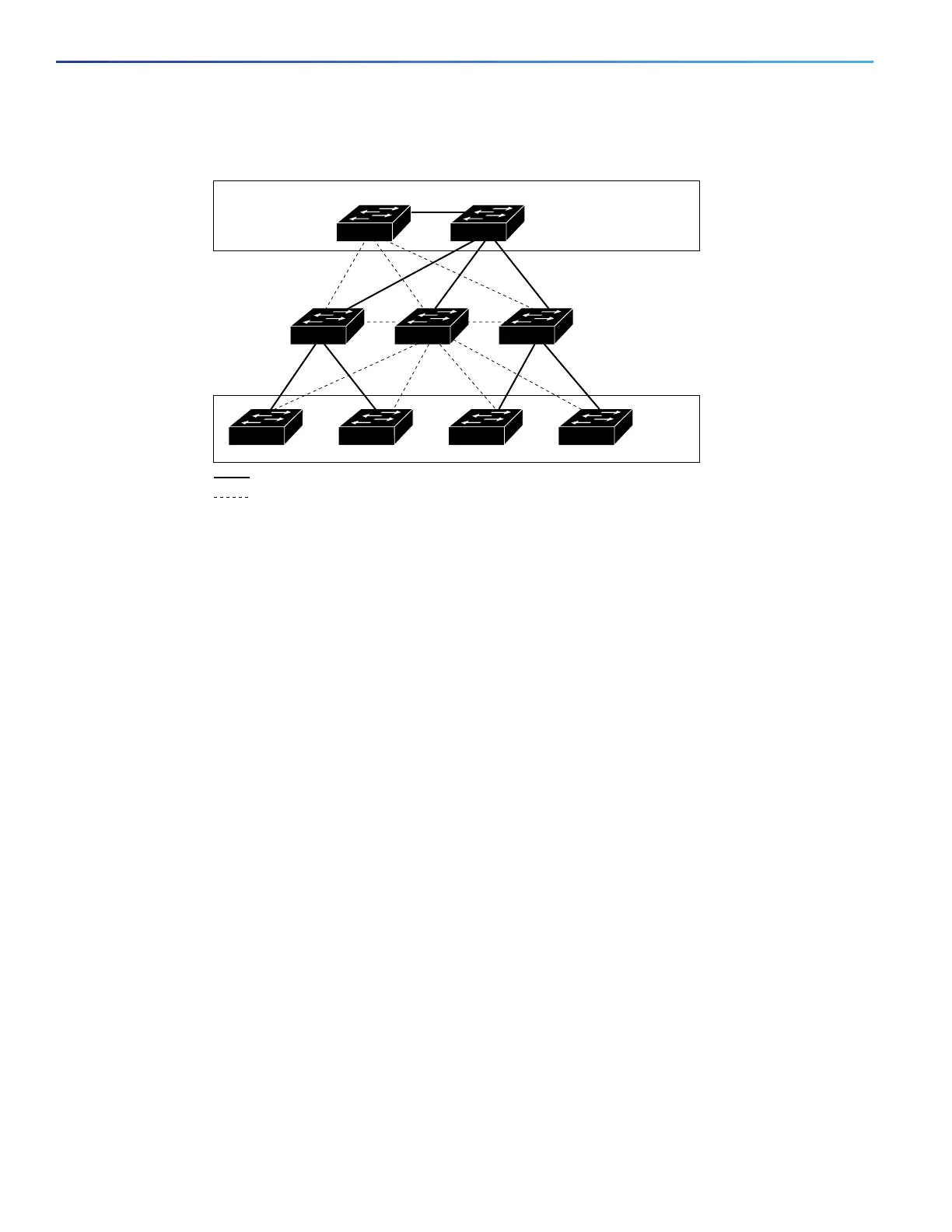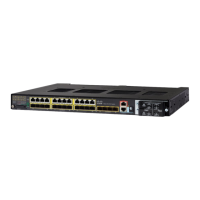356
Configuring Optional Spanning-Tree Features
Information About Configuring the Optional Spanning-Tree Features
Figure 45 Switches in a Hierarchical Network
If a switch loses connectivity, it begins using the alternate paths as soon as the spanning tree selects a new root port.
By enabling UplinkFast with the spanning-tree uplinkfast global configuration command, you can accelerate the choice
of a new root port when a link or switch fails or when the spanning tree reconfigures itself. The root port transitions to
the forwarding state immediately without going through the listening and learning states, as it would with the normal
spanning-tree procedures.
When the spanning tree reconfigures the new root port, other interfaces flood the network with multicast packets, one
for each address that was learned on the interface. You can limit these bursts of multicast traffic by reducing the
max-update-rate parameter (the default for this parameter is 150 packets per second). However, if you enter zero,
station-learning frames are not generated, so the spanning-tree topology converges more slowly after a loss of
connectivity.
Note: UplinkFast is most useful in wiring-closet switches at the access or edge of the network. It is not appropriate for
backbone devices. This feature might not be useful for other types of applications.
UplinkFast provides fast convergence after a direct link failure and achieves load balancing between redundant Layer 2
links using uplink groups. An uplink group is a set of Layer 2 interfaces (per VLAN), only one of which is forwarding at
any given time. Specifically, an uplink group consists of the root port (which is forwarding) and a set of blocked ports,
except for self-looping ports. The uplink group provides an alternate path in case the currently forwarding link fails.
Figure 46 on page 357 shows an example topology with no link failures. Switch A, the root switch, is connected directly
to Switch B over link L1 and to Switch C over link L2. The Layer 2 interface on Switch C that is connected directly to
Switch B is in a blocking state.
101231
Active link
Blocked link
Root bridge
Backbone switches
Distribution switches
Access switches

